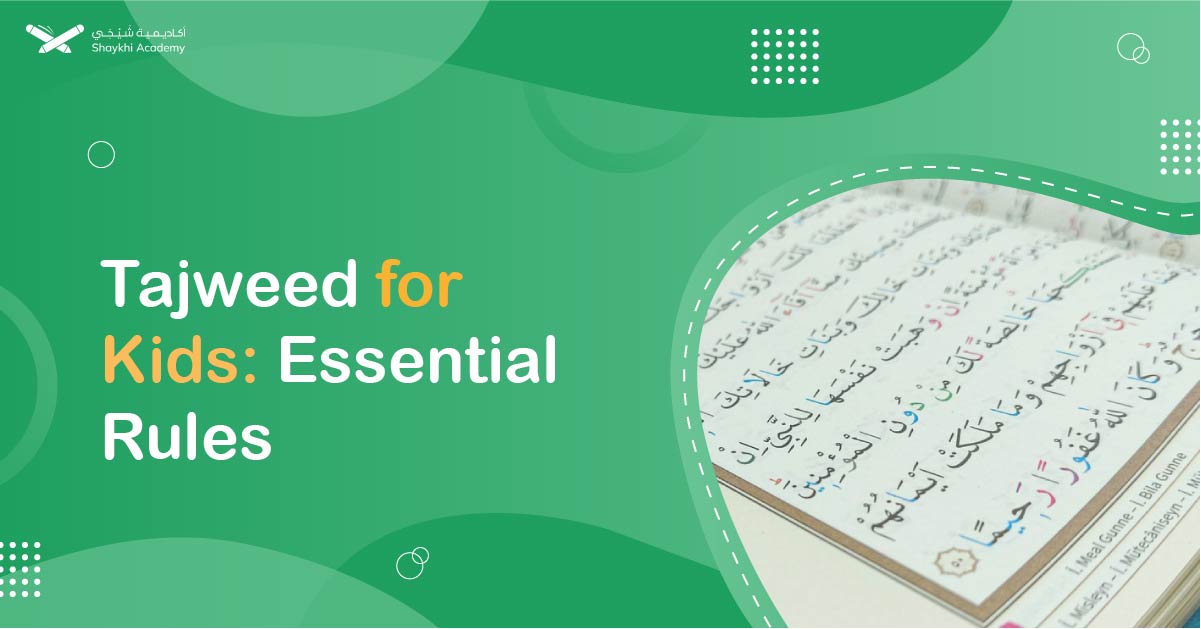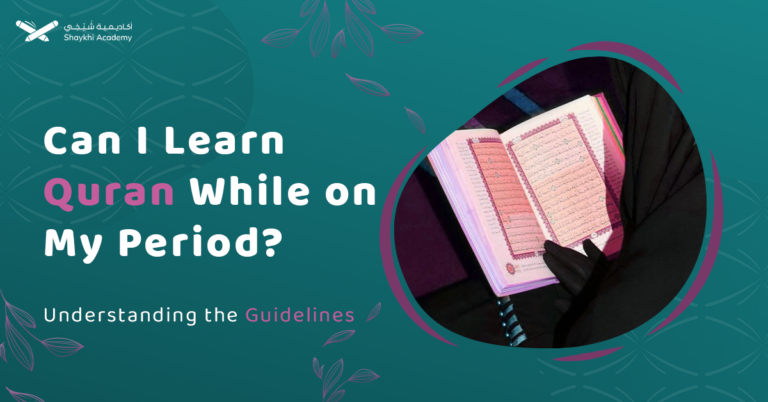Teaching Tajweed to kids involves simplifying rules like Laam Sakinah, Noon Saakinah, Tanween, Meem Saakinah, Shaddah emphasis, Madd rules, and Qalqalah for specific letters. Using Quranic Uthmani drawings, visuals, authentic recordings, stories, and games makes learning engaging and effective, building a solid foundation in Quranic recitation.
Introducing children to the beauty of Quranic recitation through Tajweed can be both rewarding and enriching. In this article, we delve into six common questions about Tajweed specifically tailored for kids, making the learning process both fun and accessible. By breaking down the basic rules into simple and engaging explanations, we ensure that young learners can grasp these important concepts with ease.
Whether you’re a parent or a teacher, these insights will help you guide children in mastering Tajweed, enhancing their recitation skills, and deepening their connection with the Quran. Let’s dive into these fundamental questions and provide kids with the tools they need to recite the Quran beautifully and correctly.
What Is Tajweed For Kids?
To begin with, Tajweed for kids refers to the science of Tajweed tailored specifically for young learners, focusing on the same fundamental rules delivered with simplicity and an emphasis on practical application. In essence, Tajweed is the art and science of improving Quranic recitation by ensuring every letter is pronounced correctly, giving each its due rights of pronunciation.
Additionally, teaching Tajweed to children should serve the meaning of the Quranic message, often using engaging methods such as interactive activities, visual aids, and repetitive practice. By focusing on practical aspects, children can quickly grasp the correct pronunciation and application of Tajweed rules. This approach not only makes learning enjoyable but also ensures that children build a solid foundation in Quranic recitation from an early age, fostering a lifelong connection and reverence for the Quran.
What Are The Main Tajweed Rules For Kids?
Teaching Tajweed to kids involves simplifying the complex rules to make them understandable and engaging. Here are some of the main Tajweed rules for kids, along with simplified explanations since there is no need to bother the children with theoretical details of rules at the beginning:
1. Rules of Laam Sakinah:
When Laam Sakinah has the sukoon sign over it, then it’s clear. Rather, if the Laam Sakinah doesn’t have the sukoon sign over it, it’s merged in the following letter. That’s why in that case we find shaddah coming on the following letter. Example for that is the Laam shamsiya and Laam qamariyah.
2. Rules of Noon Saakinah and Tanween:
- Idhar: Pronounce the Noon or Tanween clearly without nasalization. For the Noon, this is when it has a sukoon shape over. As for Tanween, idhar happens when it has the double fatha, kasra or dhamma directly above each other.
- Ikhfaa: Pronounce the Noon or Tanween with a slight nasal sound. For the Noon, this is when it has no drawing above or under. As for Tanween, ikhfaa happens when it has the double fatha, kasra or dhamma successively above each other. Also, there is a condition that the letter is not of those for merging (Idgham).
- Idgham: Merge the Noon or Tanween with the following letter, making a combined sound. Its letters are six: ( ي, ر, م, ل, و and ن). The noon and tanween shares that of ikhfaa in the shape.
- Iqlab: Change the Noon or Tanween sound to a ‘Meem’ (م) when followed by ب.
3. Rules of Meem Saakinah:
- Ikhfaa Shafawi: Hide the sound of Meem with nasalization when followed by ب.
- Idgham Shafawi: Merge the Meem with the following Meem (م).
- Idhar: Pronounce the Meem clearly when followed by the rest of the Arabic letters.
4. Shaddah:
- A letter with Shaddah (ّ) means it is pronounced with emphasis, holding the sound slightly longer. For example, the word “إنَّ” has a Shaddah on the Noon (نّ), indicating a strong and prolonged sound.
5. Madd Letters:
- Natural Madd (Madd Tabee’i): Extending the vowel sound for two counts. For example, the word “قال” has a natural Madd where the “ا” is extended.
- Mandatory Madd (Madd Wajib): Extending the vowel sound for four or five counts in specific situations, usually when it has a wave sign followed by a Hamzah (ء).
- Compulsory madd (madd Lazim): Extending the vowel sound for six counts when it has a wave sign followed by shaddah.
(Note: There is an exception here for the light compulsory madd found in only two words in the Quran as well as the beginning special letters of some Quranic chapters. However, this is not to be mentioned for the kids at their beginning journey except in a practical way when they face the word).
6. Qalqalah (القلقلة):
- Qalqalah involves a slight echoing or bouncing sound produced with letters like ق, ط, ب, ج, د when they come with a sukoon (ْ) or are at the end of a word.
To end up, by teaching these rules with practical examples and engaging activities, kids can grasp the essentials of Tajweed in a fun and interactive way. Simplifying these rules and consistently practicing them can help children develop a strong foundation in Quranic recitation.
How To Learn And Teach Tajweed For Kids?
Learning and teaching Tajweed to children can be an enriching experience when approached with creativity and simplicity. Here are some effective methods to ensure kids understand and enjoy Tajweed:
1. Simplify Tajweed Rules Using Quranic Uthmani Drawings
To make Tajweed accessible for kids, it’s crucial to simplify the content. Utilize the science of Quranic Uthmani drawings to help children recognize the letters and their proper pronunciation. This foundational approach ensures that kids can visually connect with the Arabic script, making it easier to grasp the rules of Tajweed. By breaking down complex rules into simpler, more digestible parts, children can gradually build their understanding without feeling overwhelmed.
2. Enhance Learning with Visual Aids
Visual aids such as colorful charts, diagrams, and flashcards can significantly enhance children’s understanding of Tajweed. These tools can illustrate the proper articulation points and characteristics of letters, providing a visual reference that complements their auditory learning. Using bright and engaging visuals can capture children’s attention and make the learning process more enjoyable.
3. Utilize Authentic Quranic Recordings
Authentic Quranic recordings provide a model for correct recitation, allowing children to listen and mimic the proper sounds. Playing these recordings repeatedly helps kids internalize the rules through auditory learning. Encourage children to recite along with these recordings, which can help them understand the correct pronunciation and rhythm of Quranic verses. This method also exposes them to the beauty of Quranic recitation, fostering a deeper connection with the Quran.
4. Stories with Protagonists of Children or Animals
Integrating stories with child or animal protagonists can make learning Tajweed more relatable and engaging for kids. These stories can narrate the Tajweed rules in an interactive and fun way, building trust and interest. For example, a story about a little boy learning to recite the Quran correctly or an adventurous animal character discovering the sounds of Arabic letters can captivate young minds. These narratives make the learning process enjoyable and help children retain information better.
5. Games and Activities Using Tajweed Rules
Incorporating games and activities is a highly effective way to teach Tajweed to kids. Games like mazes, puzzles, and matching exercises that use Tajweed rules can make learning interactive and fun. For instance, a maze game where children navigate through paths by following the correct Tajweed rules or a matching game where they pair letters with their corresponding sounds can reinforce their understanding. These activities not only make learning enjoyable but also encourage active participation and practice.
6. Consistent Practice and Positive Reinforcement
Regular practice is essential for mastering Tajweed. Encourage kids to practice daily, even if it’s just for a few minutes. Positive reinforcement, such as praise and rewards, can motivate children to continue learning. Setting achievable goals and celebrating milestones can boost their confidence and keep them engaged in the learning process.
7. Supportive Learning Environment
Creating a supportive learning environment is crucial for teaching Tajweed. Ensure that the atmosphere is encouraging and free from pressure. A patient and understanding approach can make children feel comfortable and eager to learn. Interactive sessions with parents or teachers can provide personalized guidance and address any difficulties the children may face.
To sum up, by combining these methods, learning and teaching Tajweed to kids can become an enjoyable and effective process. Simplifying the rules, using visual and auditory aids, incorporating engaging stories, and integrating interactive games can all contribute to a comprehensive and enjoyable Tajweed learning experience for children.
What Is The Importance Of Learning Tajweed For Kids?
Learning Tajweed in its correct context during childhood is crucial, as this period is considered the golden age for effective learning, deep understanding, solid memory, and a pure sense of perception. Here are some key reasons why you should encourage your kids to learn Tajweed:
1. Creating an early Quranic Environment:
Introducing Tajweed in an effective way to children while teaching them the Quran creates a Quranic environment from an early age. This foundation sets the stage for a better future both in this life and the afterlife, as children grow up with a strong connection to the Quran.
2. Better Understanding of the Quran:
Learning Tajweed helps children understand the Quran more accurately and deeply. This foundational knowledge enhances their comprehension and practice of the Quran–the ultimate goal of learning any Quranic science including Tajweed.
3. Fostering Spiritual Growth:
Tajweed deepens children’s spiritual connection to the Quran, enhancing their faith and devotion from a young age.
4. Boosts Confidence of Allah’s Grace:
Mastering the rules of Tajweed can significantly boost kids confidence of what Allah Almighty has granted them. Also, teachers should teach the kids to thank Allah for the skills they acquire and not to feel pride in its rejected sense.
5. Enhancing Islamic Identity:
Learning Tajweed preserves the Arabic tongue and strengthens Islamic identity. Prioritizing Arabic learning alongside Tajweed ensures children grasp the essence of the Quran and the beauty of the language.
6. Impact on Personality and Behavior:
Mastering Tajweed shapes children’s personalities and behaviors, making them exemplary representatives of the Muslim community.
7. Boosting Cognitive Skills:
The practice of Tajweed enhances cognitive skills such as memory, attention, and analytical thinking, contributing to overall intellectual development.
8. Instilling Discipline and Patience:
The meticulous nature of Tajweed instills discipline and patience in children, traits that are beneficial in all aspects of life.
9. Encouraging a Love for Learning:
Making Tajweed education fun and interactive fosters a love for learning and encourages a lifelong pursuit of knowledge.
Finally, to ensure effective learning, Tajweed education for kids should be attached to the Quranic meanings with practice in the best way matching the kids mindset. Thus, children are more likely to develop a love for Tajweed and maintain their interest in Quranic studies. Investing in Tajweed education for your kids today will yield lasting benefits for their spiritual, intellectual, and social development.
What Are The Tajweed Classes For Kids?
Tajweed classes for kids are structured educational sessions, available both online and offline, where a qualified teacher guides children in the proper recitation of the Quran. These classes can be conducted in group settings or one-on-one, providing personalized attention to each child.
The primary focus is on teaching the rules of Tajweed, ensuring that children learn the correct pronunciation and articulation of Arabic letters and words. To make the learning process engaging, these classes often incorporate interactive activities and practical exercises that help reinforce the Tajweed rules.
These activities might include games, recitation practice, and visual aids, all designed to make learning Tajweed enjoyable and effective for young learners.
Do Kids Only Learn Tajweed In The Tajweed Classes?
No, effective tajweed classes are not restricted to the technical rules. Rather, Tajweed classes for kids serve a dual purpose: they perfect the recitation skills of the children and imbue them with the teachings and values of the Quran, fostering a comprehensive understanding and connection with the noble text.
In addition to teaching the technical aspects of Tajweed, these classes emphasize the importance of understanding the Quranic meanings. Teachers explain the verses in simple terms, helping children grasp the significance of what they are reciting. This approach not only enhances their recitation skills but also connects them with the deeper messages of the Quran. By applying these meanings to their daily lives, children can develop a strong spiritual foundation and moral values.
Learn Quran Online With Tajweed For Kids With Shaykhi Academy
Learning the Quran with Tajweed from an early age is crucial for fostering a deep connection with the holy text and developing proper recitation skills. Online courses, such as those offered by Shaykhi Academy, provide a flexible and effective way for children to master Tajweed rules and Quranic recitation. These classes blend structured lessons with interactive activities, ensuring that children remain engaged and motivated. By understanding the Quranic meanings and applying them in their daily lives, young learners can build a strong spiritual foundation and moral character.
Start your child’s journey to mastering Tajweed and connecting deeply with the Quran by joining Shaykhi Academy’s courses now:
- Recitation And Tajweed Classes For Kids
- Learn Noorani Qaida For Kids – Best Online Course For Beginners
- Online Quran Classes for Kids

Conclusion:
Teaching Tajweed to children involves simplifying complex rules into understandable concepts through practical examples and engaging activities. Key rules include:
- Recognizing when to merge or pronounce Laam Sakinah based on its markings,
- Distinguishing between different modes of Noon Saakinah and Tanween pronunciation (Idhar, Ikhfaa, Idgham, Iqlab),
- Understanding the nuances of Meem Saakinah (Ikhfaa Shafawi, Idgham Shafawi, Idhar),
- Emphasizing letters with Shaddah for clarity,
- applying Madd rules (Natural Madd, Mandatory Madd, Compulsory Madd).
- And Qalqalah that adds a bouncing sound to specific letters in certain conditions.
By presenting these rules with Quranic Uthmani drawings, visual aids, authentic recordings, storytelling, interactive games, and consistent practice, children can grasp Tajweed effectively and enjoyably, fostering a strong foundation in Quranic recitation from an early age.














































